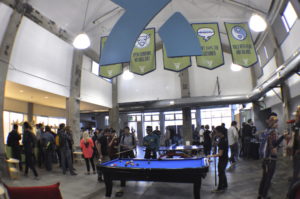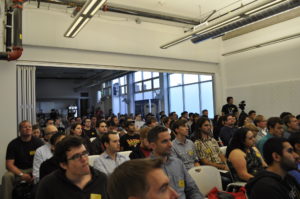 Since its launch in 2010, Uber’s engineering team has grown from four to 70. You might be surprised to hear that today, only six of those engineers are focused on mobile; the rest are responsible for the science that is helping Uber solve transportation problems globally (18 countries, 45 cities, every time zone, and a dozen languages, to be exact).
Since its launch in 2010, Uber’s engineering team has grown from four to 70. You might be surprised to hear that today, only six of those engineers are focused on mobile; the rest are responsible for the science that is helping Uber solve transportation problems globally (18 countries, 45 cities, every time zone, and a dozen languages, to be exact).
Using Python and JavaScript, Uber’s science team has built a logistics framework that – in addition to facilitating delivery of ice cream, roses, and mariachi bands – predicts demand, and uses that data to get the right amount of cars on the road, in the right places, at the right time. All this adds up to accurate estimated times of arrival, or ETAs, for urbanites worldwide.
 This past Tuesday marked our second installment of the Atlassian Dev Den Tech Talk series, where thought leaders in software development share their stories. Curtis Chambers, Uber’s director of engineering, gave us an in-depth look at how Uber has gone from a San Francisco cult favorite, to a company that literally dispatches helicopters to citizens of New York City who need a lift.
This past Tuesday marked our second installment of the Atlassian Dev Den Tech Talk series, where thought leaders in software development share their stories. Curtis Chambers, Uber’s director of engineering, gave us an in-depth look at how Uber has gone from a San Francisco cult favorite, to a company that literally dispatches helicopters to citizens of New York City who need a lift.
Check out the video of Curtis’ talk to learn more, and witness an epic Q&A session with answers to questions we’ve all wondered about, such as “What’s the deal with surge pricing?”, “How do you decide which cities to launch in?”, and “Is Uber getting driverless cars?”.
Be sure to claim your spot for our talk on November 5: The Platform Holy Grail, with Bjorn Freeman-Benson, software psychologist at New Relic. Click below to sign up:
Do you have a story to share? Want to recommend a speaker or topic? Contact us for speaking opportunities!